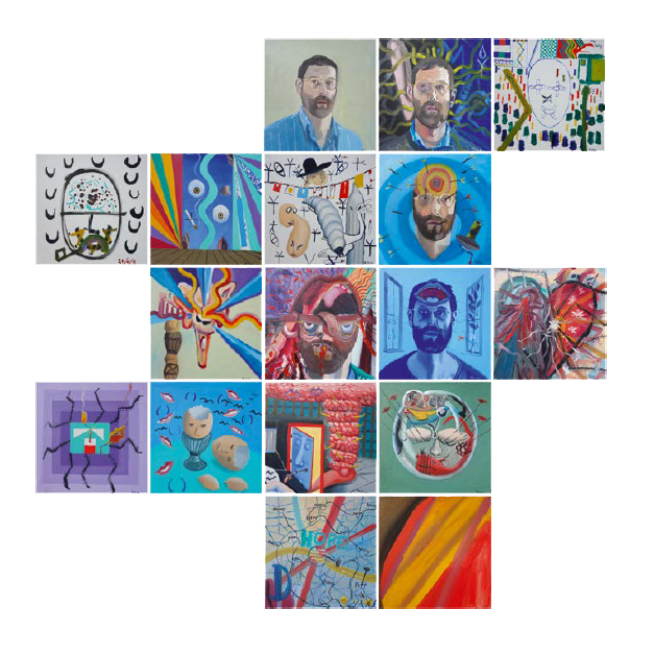WHAT'S NEXT | Beyond mind-body dualism
Beyond mind-body dualism
No idea can be separated from its thinker and no thinker can be extracted from their surroundings. The perspective from which we look at and learn about the world is intrinsically contingent and embodied.
By Martina Ardizzi
Science isn’t a catalogue of facts; instead, it’s the result of a deductive exercise, and the person who carries it out, along with those who benefit from its conclusions, are an integral part of it. Science provides for a conventionally defined and shared method which indicates the path to take, but the questions asked, and the conclusions offered are deeply determined by the sociocultural context and the subjectivity of the individuals involved. So naively charged with objectivity, scientific progress itself is not subjugated to the identification of absolute truths. Instead, it’s aimed at the search for new questions which keep it alive and vibrant.
Progressing means being able to ask oneself questions which were previously unthinkable. The true revolution lies in the questions, and not in the answers.
Recent discoveries in neuroscience have put one of the pillars of conventional Western thought to the test, even dismantling it entirely: that which is known as ‘Cartesian dualism.’ According to this perspective, it’s possible to draw a line between the mind and the body. In a slightly more detailed interpretation, we might say that the mind was viewed as the disembodied and abstract function of a body, or better yet, of a brain, which instead was entirely material and tangible. A sort of super-sophisticated control and calculation room whose function is the mind.
In the field of neuroscience, this legacy of Western thought was absorbed by ‘classical cognitivism,’ which understood the central nervous system as organised into distinct, consequential modules. There was a brain which ‘perceived,’ one which ‘thought,’ and one which ‘acted.’ The parts of the brain set up for perception and action were respectively entrusted with the processing of incoming and outgoing signals without any cognitive role.
Today we know it’s much more complicated and interconnected than that: human cognition is in fact closely linked to the interaction of the body with its surroundings. Cartesian dualism came crashing into an embodied perspective of human cognition when a specific class of neurons, ‘mirror neurons,’ was identified by the group led by Giacomo Rizzolatti in Parma in the 1990s. These neurons have properties which are entirely inconsistent with the model of the brain proposed by classical cognitivism and supported by Cartesian dualism. They belong to the part of the brain which acts, meaning they are neurons with motor properties. Despite that, mirror neurons also respond to visual or audio stimulation, properties which are more consistent with the part of the brain which perceives. Indeed, they are nerve cells which are activated both when the individual completes a specific action and when the individual observes or hears someone else carrying out that same action. The practical role of that property has been associated with the implicit and direct comprehension of the motor actions and intentions of others. Today, after decades of studies carried out on non-human primates and on humans, we know that mirror neurons support empathic processes and contribute to imitative learning. These cells not only cross the line between the brain that acts and the brain that perceives, but they also do something technically cognitive.
Human cognition can no longer be seen as incorporeal and extraneous to the body. To the contrary, physical surroundings, sensory perception, and motor actions are an integral part of the cognitive process. Bodily experiences, like touching, moving, and interacting with the environment, are fundamental to the formation of concepts, to problem solving and to the processing of information in general. In terms of language, for example, sensory-motor representations are used to access the semantic meaning of words, whether concrete or abstract. In you, as you read ‘to kiss,’ ‘to kick,’ and ‘to break,’ the regions of the brain dedicated to motor control of those very actions are activated, and those activations contribute to the semantic understanding of that which you’re reading. Even more so, access to the abstract meaning of metaphors such as ‘to break one’s heart’ is mediated by the motor activation linked to the action. In other words, I understand its abstract meaning because I have, in the first place, access to its concrete dimension through bodily experience.
Today, the embodied cognition approach has completely overtaken the classical cognitivism that came before it, leading to important implications in different industries. Understanding that the body participates in human cognition has influenced the design of educational programmes which consider the central role of bodily experience, and the envisioning of rehabilitation processes for cognitive and motor impairments which make use of the interconnection between mind and body. Much is being done in the design of urban and public spaces, considering them as porous to the cognitive fingerprint of man. The study of virtual environments and their effective prosthetic use of human action and cognition is taking advantage of the neuroscientific approach and the embodied cognition perspective.
In conclusion, the long road from the inflexibility of Cartesian dualism to the rediscovery of the interconnection between mind and body is a meaningful chapter in the history of neuroscience and Western thought overall. In an era in which technical progress and global interconnection have sped up the processes of discovery, the new questions that we can now ask ourselves will be able to detail the holistic and embodied nature of human cognition.




